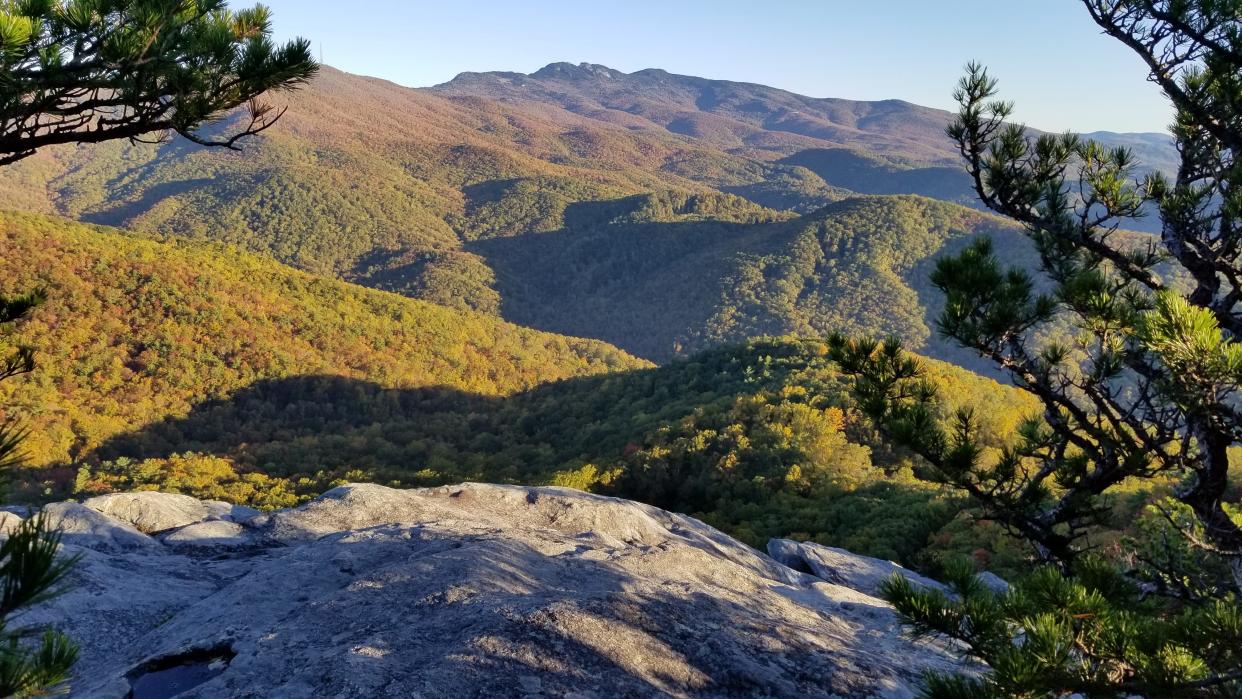Answer Man: How will the last winter affect leaves in Asheville, WNC?

Today's burning questions ask how winter weather will affect the leaves this spring. Got a question for Answer Man or Answer Woman? Email Interim Executive Editor Karen Chávez at KChavez@citizentimes.com and your question could appear in an upcoming column.
Question: We have had an unusually mild winter with average precipitation. How will this affect the leafing out of trees in the mountains as well as in the Asheville community? What factors determine when leaves appear? Temperature? Amount of daylight? Moisture? Species of tree?
Answer: I reached out to a couple researchers for this question, and got some pretty thorough explanations of what affects leaves. For now, here's an answer on what we can expect this spring.
"Currently, we do seem to be having a somewhat earlier spring, especially in terms of trees that flower early (red buds, etc.)," Jonathan Horton, a UNC Asheville biology professor and chair who studies plant physiological ecology, told me via email. "I think as long as we do not have an extended hard freeze (low twenties and teens) and we keep getting adequate rain, we should have a good, albeit somewhat early, spring for our trees."
As to the factors the reader asked about, here's what researchers had to say.
"The leaves are formed in the late summer and fall and then overwinter as protected buds," Horton explained. "They typically need a certain amount of accumulated cold days before they can break dormancy. This prevents them from breaking dormancy and leafing out during those really warm winter periods we often get. The number of accumulated cold days required for breaking dormancy varies by species. Once this threshold is met, trees cue in on both daylength and temperature. If there are consistent early warm temperatures, then the daylength requirement can be overridden and trees can leaf out a little earlier. Another factor that influences this is water availability. If we are in drought conditions, then this can delay or slow leaf out and leaf expansion, and can also have implications if the leaves are damaged by a late frost."
ACT Answers:Answer Woman: What is the history of the sanitariums in Asheville? Why so many?
More:Answer Man: What science goes into meteorologists’ weather predictions?
"I remember one spring about a decade or so ago when we had early leaf out and then several hard freezes (overnight temps in the teens) in early April that killed most newly emerging leaves," he said. "Because we were in drought, the trees did not have the water to expand new leaves and for a while it looked like fall with small dead leaves on the trees."
Leafing out is a "complex phenomenon" that's dependent on several things, Appalachian State University biology professor Howard Neufeld told me via email. Some of those factors include temperature, as trees will "often leaf out early if it is warm in the spring, sometimes by up to a week or more"; day length and night length, which trees can sense; and the duration of warming.
"If the soils are frozen and the air warms up, trees may try to do some photosynthesis, but they won't be able to replace any water that is lost because most of their roots will still be frozen," Neufeld said. "That could lead to a water deficit problem. If the warming is long enough to thaw the soils, then winter warming could enhance photosynthesis in these plants and enable them to grow at times they are normally dormant. Lots to learn as our climate continues to change."
Given the season, moisture has less of an effect on trees leafing out, Neufeld said.
"We don't experience serious droughts usually in the spring, so there is rarely a problem with that," he said. "Summer is more of a problem for drought."
Read this:With projects planned for Enka and Woodfin, what's next for Buncombe County greenways?
More:Answer Woman: How popular is Lake Powhatan campground? How many campsites?
"With climate change, a couple of things are happening," Neufeld said. "The NC Climate Office has documented that nights are warming faster than days, and winters more than summers. How that will affect tree growth and survival is something that needs much more study. For evergreens, like pines and hemlocks, and rhododendrons, a warm winter could be detrimental if it leads to excessive respiration (the loss of carbon, just like what happens when we humans breathe out), since respiration rates go up with temperature."
Beverly Collins, a biology professor at Western Carolina University, pointed me to a Boston University paper that highlighted how changing leaf-out times are highlighting the changing climate.
"Climate change is already affecting many ecological processes, and leaf out is no exception," the paper says.
"Throughout the world, forests are being altered in many ways by the rising temperatures associated with global climate change, and the earlier leaf-out dates of trees and shrubs is one such example," part of the paper's conclusion reads. "Earlier leaf-out dates are expected to continue in coming decades across much of North America. Over a longer period of time, many tree species will likely be extirpated on a local scale and shift their ranges in response to the changing climate. Because there is a wide variation among species in leaf-out times, changes in the species composition of a forest will also mean changes in leaf-out dates at the level of the whole forest."
Ryan Oehrli covers public safety, breaking news, courts and other beats for the Citizen-Times. Comments? Questions? Tips? Send them to coehrli@citizentimes.com or 252-944-6816. Please support local, daily journalism with a subscription to the Citizen Times.
This article originally appeared on Asheville Citizen Times: Answer Man: How will the winter affect leaves in Asheville, WNC?

